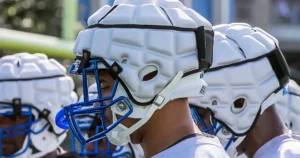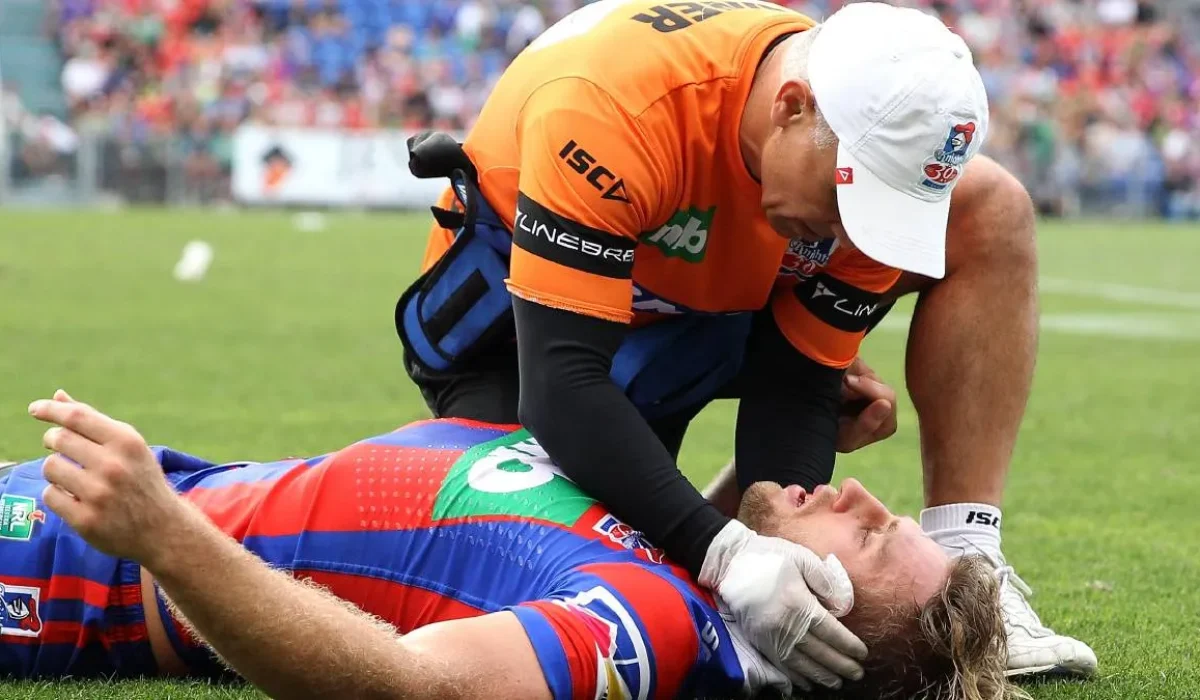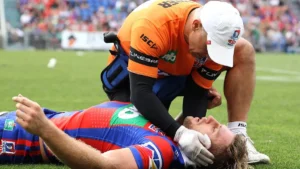Concerns over concussion-related injuries in sports continue to rise. For athletes of all ages — including youth and amateur levels — the latest research is drawing attention to not only immediate recovery but also long-term brain health. This topic is timely for injuries.blog readers who are active, supportive of athletes, or seeking practical information about injury prevention and management.
What The Recent Research Shows
-
A recent study found that athletes who had been cleared to play still showed brain changes up to a year post-concussion. UPI
-
Another review highlights the increasing role of instrumented mouthguards and monitoring for subconcussive impacts in contact sport.
-
A podcast report observed a surge in major sports injuries — e.g., ACL tears in soccer, concussions in football — raising questions about athlete load and recovery.
-
Data show that 7 of 10 emergency department visits for sports-/recreation-related TBIs (traumatic brain injuries) involve children age 17 or younger.

Why This Is A Trending Topic
-
Increased media coverage and legal action (see class-action suits in rugby) raise public awareness. AP News
-
Athletes, parents and coaches are asking more questions: “Is returning to play safe? What are long-term risks?”
-
Advances in sports medicine mean that returning to play is no longer just about symptoms but about brain health and recovery monitoring.
Key Considerations For Athletes And Families
-
Return-to-Play Isn’t Always Return-to-Normal — Even when symptoms resolve, brain scans may still show changes.
-
Subconcussive Hits Matter — Repeated small impacts (not full concussions) are being linked to longer-term brain changes. Frontiers
-
Youth Are Especially Vulnerable — The developing brain may have different recovery needs and risk profiles. CDC
-
Load Management Is Critical — Overuse, insufficient rest and early return to sport may raise risk of major injury. The Ringer
What Can Be Done
Here are proactive steps for athletes, coaches and guardians:

-
Promote Head Injury Education – Make sure all involved understand concussion signs/symptoms and long-term risks.
-
Implement Baseline & Post-Injury Assessments – Consider baseline testing and follow-up imaging/monitoring where feasible.
-
Encourage Conservative Return-to-Play Protocols – Emphasize rest, gradual progression and professional clearance.
-
Monitor for Subtle Signs Post-Injury – Even if the athlete “feels fine,” watch for changes in mood, memory, sleep or behaviour.
-
Foster Culture of Safety – Teams and clubs should prioritise protective gear, safe techniques, and load-management.
Explore additional resources on Sport-related concussions in high school athletes: MyNeuroNews article, The Guardian article on former rugby players at risk of cognitive issues, and Concussion update 2025: Sports Medicine Review.
Final Thoughts
The dialogue around sports concussions is shifting – from immediate recovery to long-term brain health. For athletes at every level, and the parents/coaches supporting them, staying informed about the latest research and practical safeguards may help reduce risk and support safer participation in sport. injuries.blog is well placed to provide thoughtful, relevant guidance.



